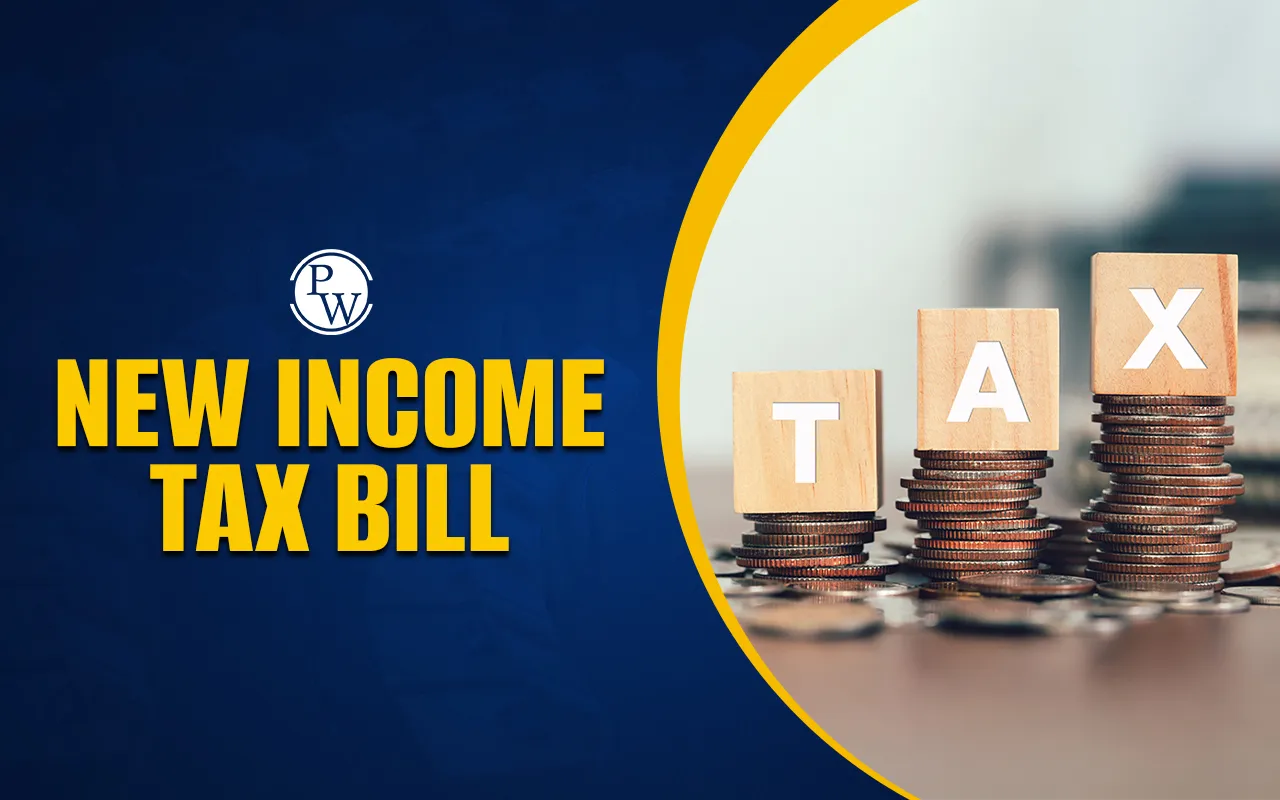
New Income Tax Bill 2025 in India represents a change in the country’s direct tax environment. The bill was introduced by Finance Minister Nirmala Sitharaman on August 11, 2025. It is set to replace the Income Tax Act of 1961. The bill was drafted based on the recommendations of a parliamentary select committee seeking to streamline tax laws and update compliance.
BJP Member Baijayant Panda was the chairman of the Parliament Select Committee, which proposed 285 suggestions to simplify and update the taxation system in India.
The New Income Tax Bill 2025 facilitates the faceless collection of information and evaluation to minimize personal interface and ensure transparent digital proceedings. It is an attempt towards harmonized assessment timelines for improved compliance and fewer litigations. The improved rules under the New Income Tax Bill and more precise definitions seek to reduce ambiguities and court challenges. The revised income tax slabs under the bill can be summarized as follows:
| New Income Tax Regime in 2025 | |
| Annual Income | Rates |
| Up to ₹4,00,000 | Nil |
| ₹4,00,001 to ₹8,00,000 | 5% |
| ₹8,00,001 to ₹12,00,000 | 10% |
| ₹12,00,001 to ₹16,00,000 | 15% |
| ₹16,00,001 to ₹20,00,000 | 20% |
| ₹20,00,001 to ₹24,00,000 | 25% |
| Above ₹24,00,000 | 30% |
Introduced by Finance Minister Nirmala Sitharaman on August 11, 2025, the New Income Tax Bill PDF can be downloaded from the official website of the Ministry of Finance, Government of India. The PDF can also be downloaded from the link provided below:
The New Income Tax Bill was introduced by Finance Minister Nirmala Sitharaman on August 11, 2025, to replace the 65-year-old Income Tax Act, 1961, which has become obsolete and cumbersome owing to decades of amendments and changes. The New Income Tax Bill Summary is as follows:
It aims to reduce the text volume and sections by 50% approximately and present the provisions in a simple and comprehensible manner.
It has simplified the taxation deadline by reducing the distinction between the previous and assessment year. The concept of a unified ‘tax year’ is also introduced.
There are provisions for taxpayers to claim refunds even when submissions are done post deadlines. This will provide relief to individuals filing their IT returns.
According to various tax experts, the proposed reforms would simplify compliance procedures for individuals, organizations, and MSMEs and foster a reliable and simple taxation framework.
The New Income Tax Bill also seeks to remove unnecessary and duplicate clauses for improved navigation and to reorganize sectors systematically for easier reference.
The New Income Tax Bill was introduced by Finance Minister Nirmala Sitharaman on August 11, 2025, to replace the 65-year-old Income Tax Act, 1961, which has become obsolete and cumbersome owing to decades of amendments and changes. The New Income Tax Bill Summary is as follows:
It aims to reduce the text volume and sections by 50% approximately and present the provisions in a simple and comprehensible manner.
It has simplified the taxation deadline by reducing the distinction between the previous and assessment year. The concept of a unified ‘tax year’ is also introduced.
There are provisions for taxpayers to claim refunds even when submissions are done post deadlines. This will provide relief to individuals filing their IT returns.
According to various tax experts, the proposed reforms would simplify compliance procedures for individuals, organizations, and MSMEs and foster a reliable and simple taxation framework.
The New Income Tax Bill also seeks to remove unnecessary and duplicate clauses for improved navigation and to reorganize sectors systematically for easier reference.
Apart from replacing the old Income Tax Act of 1961, the revised IT bill has also proposed several other specifications and changes. These changes are provided below:
The bill has kept the continuing provisions for carrying forward losses and provides tax relief for anonymous donations made to religious trusts.
The timeline for submitting the TDS corrections has been reduced to two years. Earlier, the timeline for submission under the Income Tax Act of 1961 was six years..
The updated bill employs simple terminology to enhance accessibility and will eliminate outdated provisions to provide better clarity.
Clause 187 of the Bill has been expanded by the incorporation of the term ‘profession’ following ‘business’, which will allow professionals with total receipts surpassing INR 50 crore yearly to access prescribed electronic payment methods.
The New Income Tax Bill introduced in the Parliament seeks to address the issues with the old Income Tax Act of 1961. There were 285 recommendations proposed by the Parliamentary Select Committee, and all these recommendations are set to become effective from April 1, 2026. The features of the New Income Tax Bill are summarized in the table given below:
| New Income Tax Bill Features | ||
| Particulars | Income Tax Act, 1961 | Income Tax Bill, 2025 |
| Structure | Dispersed, complex, 75-year-old | Simplified, grouped, clearly-worded |
| Tax Slabs | Multiple, less progressive | Raised limits, new progressive bands |
| Deductions | Fragmented, confusing | Standardized, clear rules for deductions |
| Capital Gains | Vague on digital assets | Cryptocurrencies, digital assets now fully defined |
| MSME Definitions | Different from the official MSME Act | Aligned with the MSME Act |
| Compliance | Paper-driven, manual interface | Faceless, digital-first processes |
| Asset Valuation | Occasional ambiguity | Clearer valuation rules, vacant relief |
| Refund Policy | Refund denied for late returns | Refund granted for late returns in valid circumstances |
| TDS/TCS | Spread across sections | Logically grouped for clarity |
| Pension Deduction | Employees only | Equal for employees and non-employees |
| Effective Date | April 1, 1962 | April 1, 2026 |
Get ready for the UPSC 2025 exam, Explore PW UPSC Courses!

UPSC Coaching